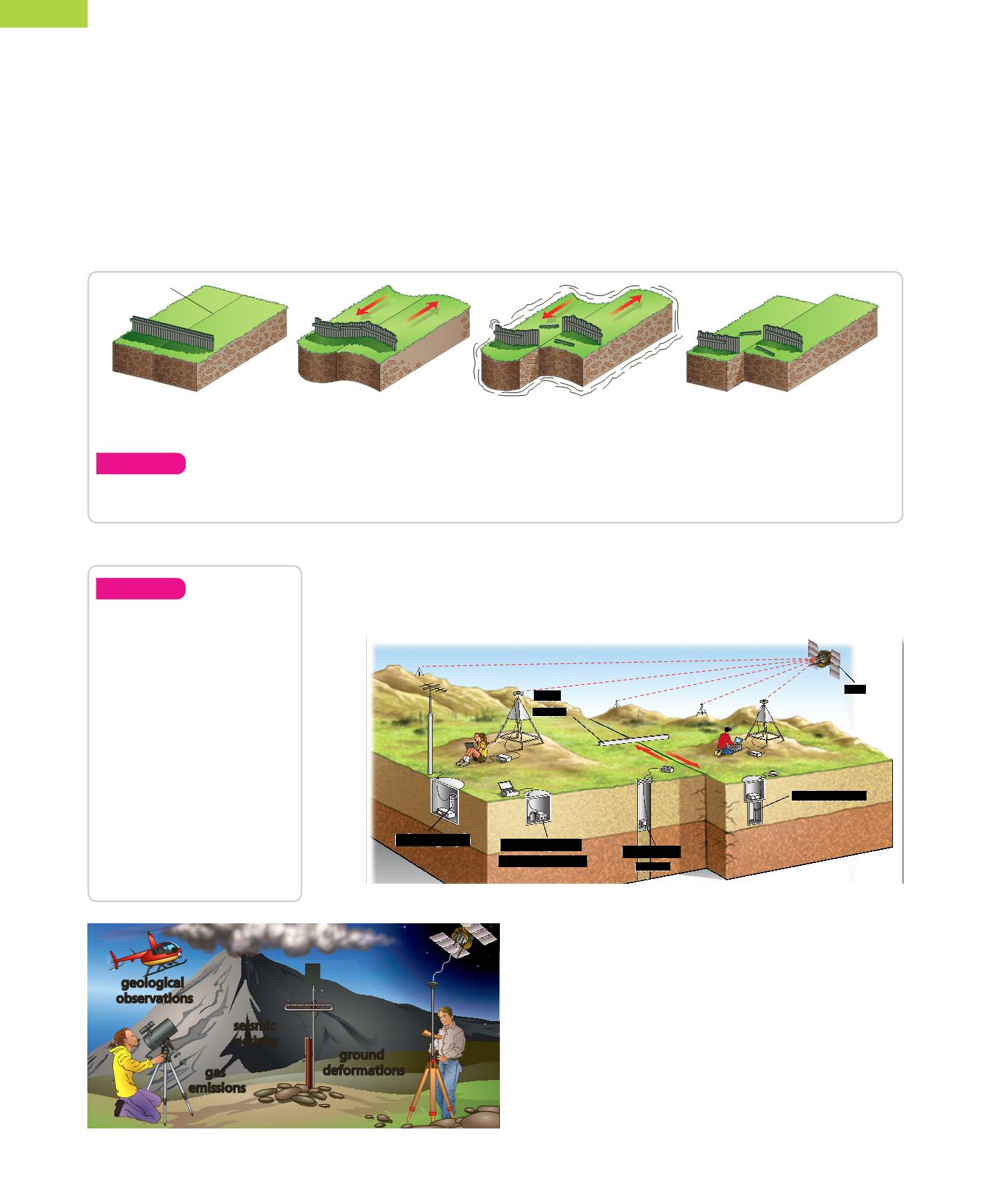
16
5.3.
Predicting earthquakes and volcanoes
We are still very far away from being able to predict the day and time that the next
earthquake will occur. We do not even have reliable indicators that tell us how close
it is. But we do know that where there have already been earthquakes of some
intensity every certain amount of time, they will continue to happen with a similar
intensity and regularity.
The elastic rebound theory can help us to have an approximate idea of the areas of
a fault that are susceptible to displacement soon.
original position
deformation
rupture and release of energy
new position of equilibrium
fault
flow
meter
seismograph resistivity and
magnetometer
radon gas
meter
inclinometer
GPS
Elastic rebound theory
Analyse
40.
Look at the diagrams and explain how an earthquake is produced according to this theory.
Signs of possible earthquakes
Analyse
41.
Find out what instruments
are used to predict
earthquakes and volcanic
eruptions.
42.
Investigate the difference
between earthquake
precursors and aftershocks.
What importancedoeach
of these have?
43.
Discuss the difference
between our knowledge
and techniques to predict
volcanic eruptions and
earthquakes.
Earthquake prediction is based on measuring the accumulated pressure in the rock
near the faults or detecting the microfractures that sometimes appear before the
main displacement. These microfractures produce changes in the magnetic and
electrical properties of the rocks and allow certain gases to escape, such as radon.
Volcanic eruptions
can be predicted with a certain amount
of accuracy, provided we have the instruments and people
monitoring them. This is done by registering the signs
that magma is accumulating in the magma chamber and
then the factors that allow it to rise towards the surface.
When this occurs, a series of micro-earthquakes known as
volcanic tremor
take place.
Another important source of indicators is themeasurement
of the amount, composition and temperature of the
gases and thermal springs released by the volcano before
eruption.
ground
deformations
seismic
activity
geological
observations
gas
emissions
Monitoring a volcano


